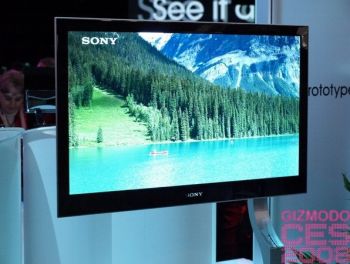Panasonic re-organizes to put more focus on OLED displays
According to a report from Nihon Keizai, Panasonic has taken steps to streamline its R&D and put more focus on OLED TV development. The company plans to invest ¥30 billion ($385 million) in a pilot AMOLED production line in Himeji (this was already reported in April). According to the report Panasonic wants to use PLEDs and ink-jet printing in its upcoming fab. Panasonic's P-OLED/Ink-jet development dates back to the OLED TV joint-venture with Sumitomo in 2009.
 Sony OLED TV prototype
Sony OLED TV prototype
The report also details the collaboration between Panasonic and Sony. The two companies have quite different technologies - Panasonic with its P-OLED and printing processes and Sony with small-molecules and VTE. It is claimed that Sony will mostly supply capital for Panasonic, and not technology. Sony's own OLED technology will be used though by Japan Display to make small sized panels.











